Azerbaijan is the land of fire in more than one manner. While it is the official motto of the country, and that it is home to Ateshgah, one of the oldest fire worshipping temples in the world, Azerbaijan is also home to a ton of oil, which is at the very least known for its flammability. The distinct geology of the region even gives birth rocks that seemingly burn on their own, and mud volcanoes that are seen to be on fire from time to time.
If any these sounds cool to you, then you may enjoy a trip around Baku’s outlying regions, in which you can see a ton of these altogether. Most such daytrips run by local companies include a visit to the Bibiheybat Mosque, mud volcanoes and petroglyphs of Gobustan, “burning mountain” north of Baku, and Ateshgah on the outskirts of the city. I for one was not interested in seeing some random rocks on fire, and I already visited Ateshgah on my own time, as it is easy to reach from the city center and is better off visited alone to avoid the masses. Therefore, I negotiated with a local tour company (Baku Heritage Tours to be specific) to take me on the first half of their tour so that I could see the rest of these wonders with my own eyes. Join me, as I show you how that day turned out to be, with all of its twists and turns!
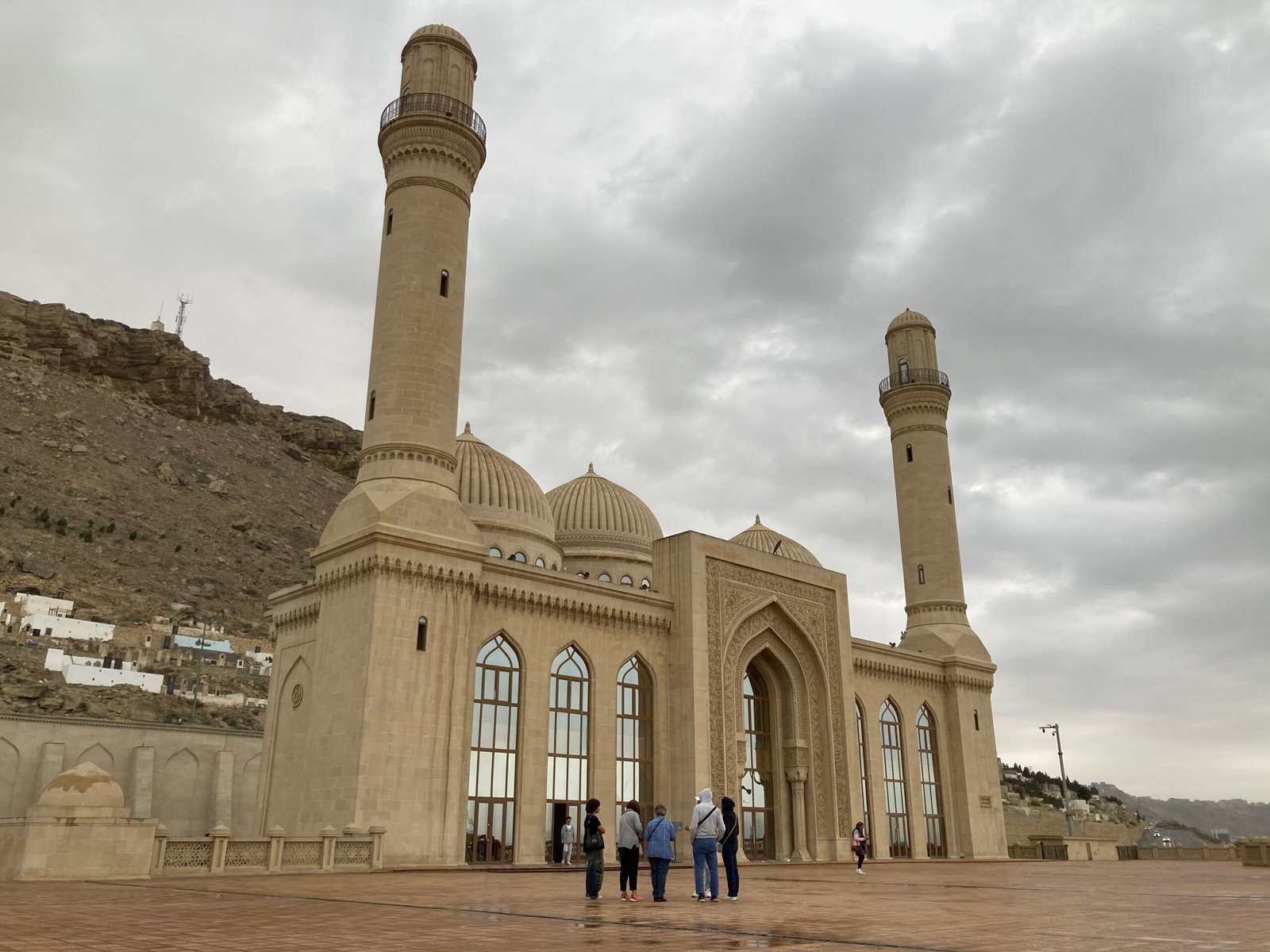
Bibiheybat Mosque is the first destination you visit during these trips. It is on the way to Gobustan and is very hard to miss. The building you see was built in 1990s, as the original was destroyed by Stalinists in 1936. It is clearly a modern structure, but guides will speak of this place as some sort of spiritual center of Azerbaijan, due to the assumption that at some point in time, a family member of Prophet Mohammad was buried here. It is difficult to test this theory, alas, the locals seem convinced that it is the case.
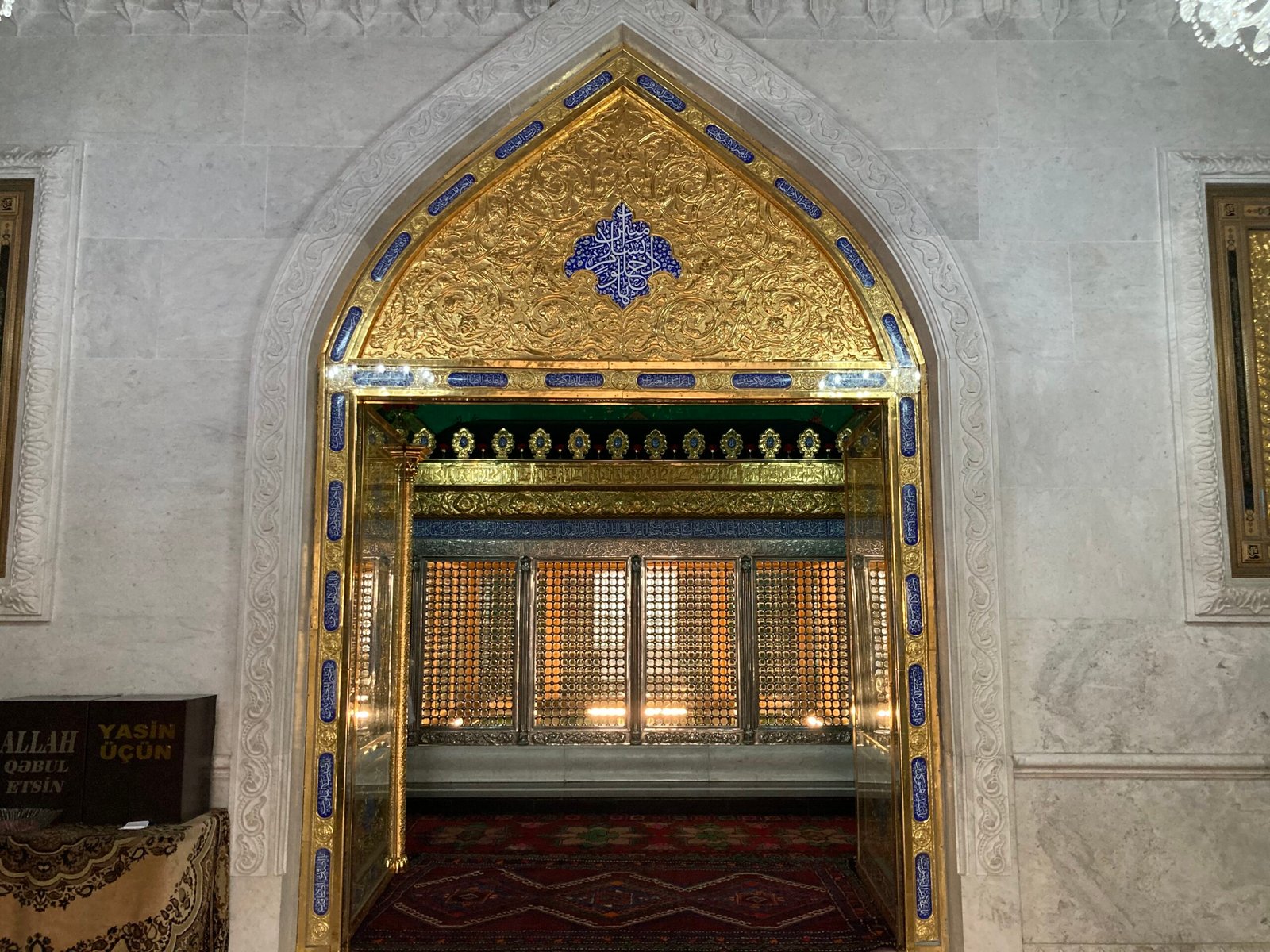
Inside, you will find the tomb of Ukeyma Khanum, the aforementioned relative of Prophet Mohammad. There are also some praying chambers, but this is certainly the main event.
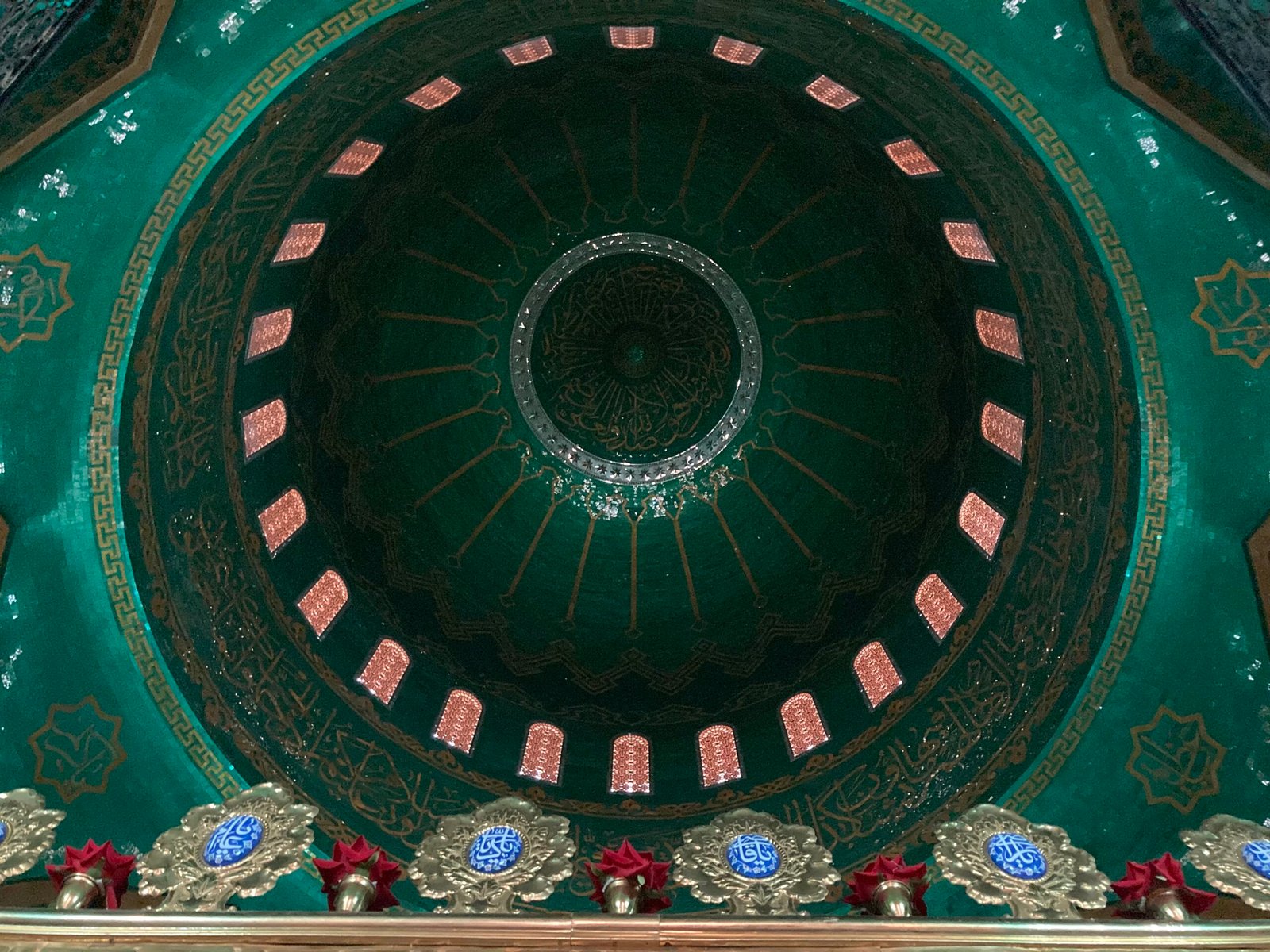
The dome of the tomb chamber is nothing short of amazing and is worth a visit on its own. Do know that this is a rather popular tourist destination, so you will not have many good opportunities to take decent photos over here. The lightning situation does not help as well.
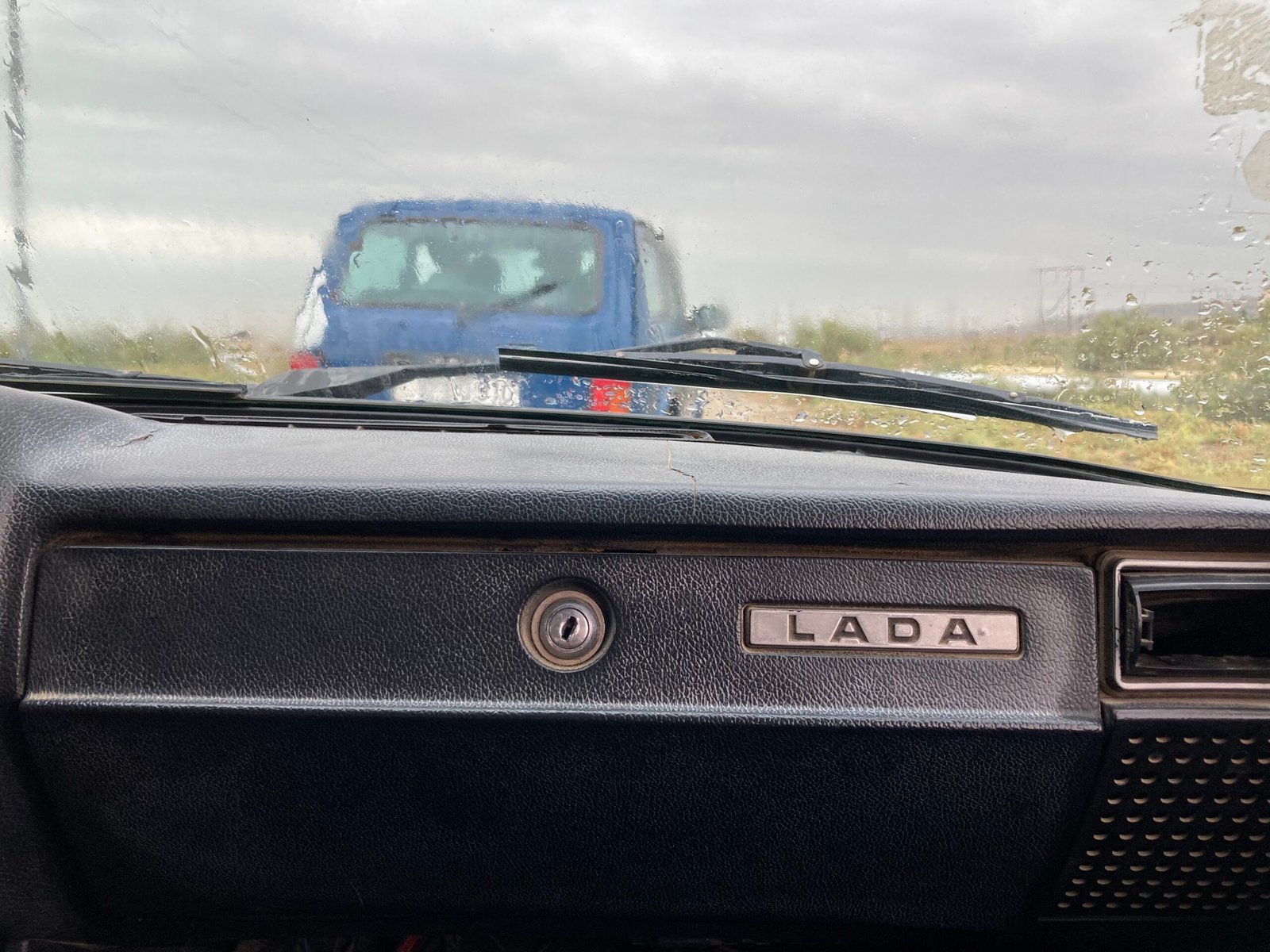
After leaving Bibiheybat Mosque, we were greeted with a torrential rain. As we rushed to the minibus, there was only one thing on everyone’s minds, how could we enjoy the mud volcanoes now? This was, in fact, a problem. You see, you have to take these much smaller and older cars to get to the location of mud volcanoes, leaving the comfort of your minibus behind. This is necessary to brave the poor roads in between the main road and the main attraction. Well, when dirt roads meet rain, it becomes a muddy show for all to enjoy. Plenty of cars spun and almost flipped as we slowly made our way to the top of a nearby hill. Eventually, we were provided with some plastic bags so as not to dirty the cars too much, and then let go to enjoy the destination.
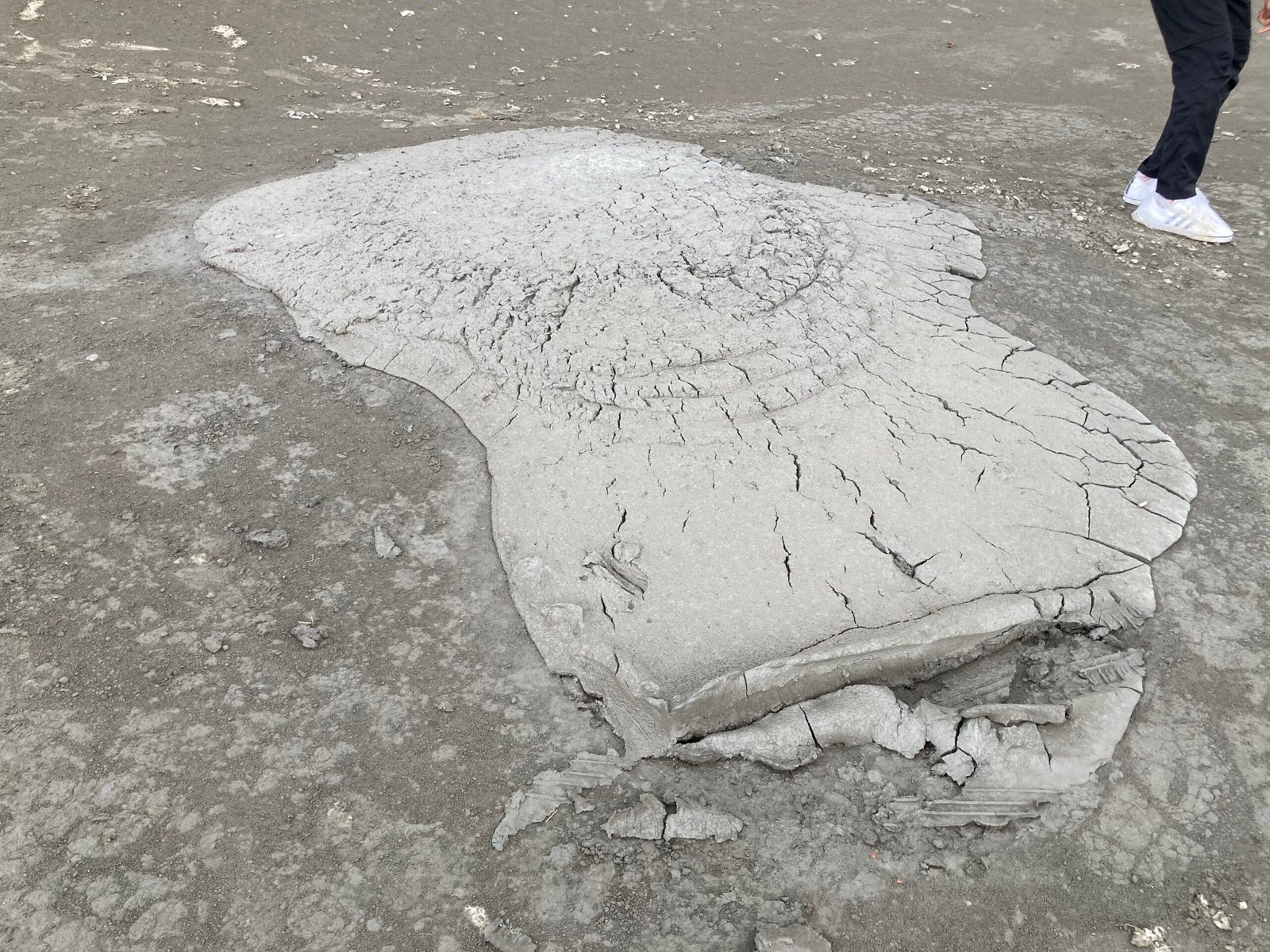
Mud volcanoes of Gobustan are certainly well worth a visit. They start with humble beginnings like this, simple mud pourings on the ground. It is best to be aware of where you are putting your foot when you visit this location.
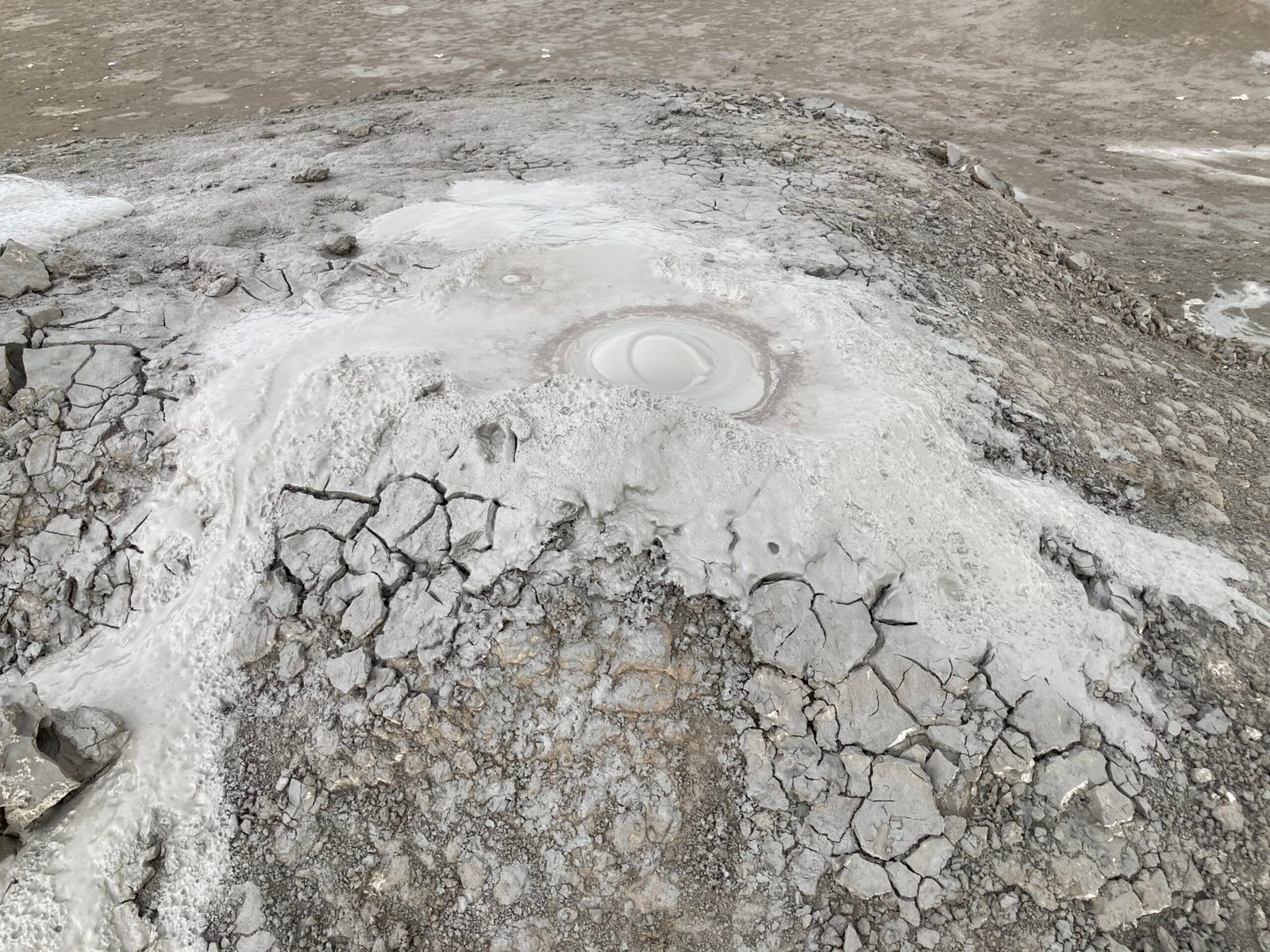
In due time, more mud flow creates a small mound. Sometimes you can see literal mud bubbling away on top of these formations. Though they look like grey volcanoes, the mud here is not even warm. They are moving due to the gases in the crust of the earth, that are trying to use these muddy tunnels to escape their rocky prisons.
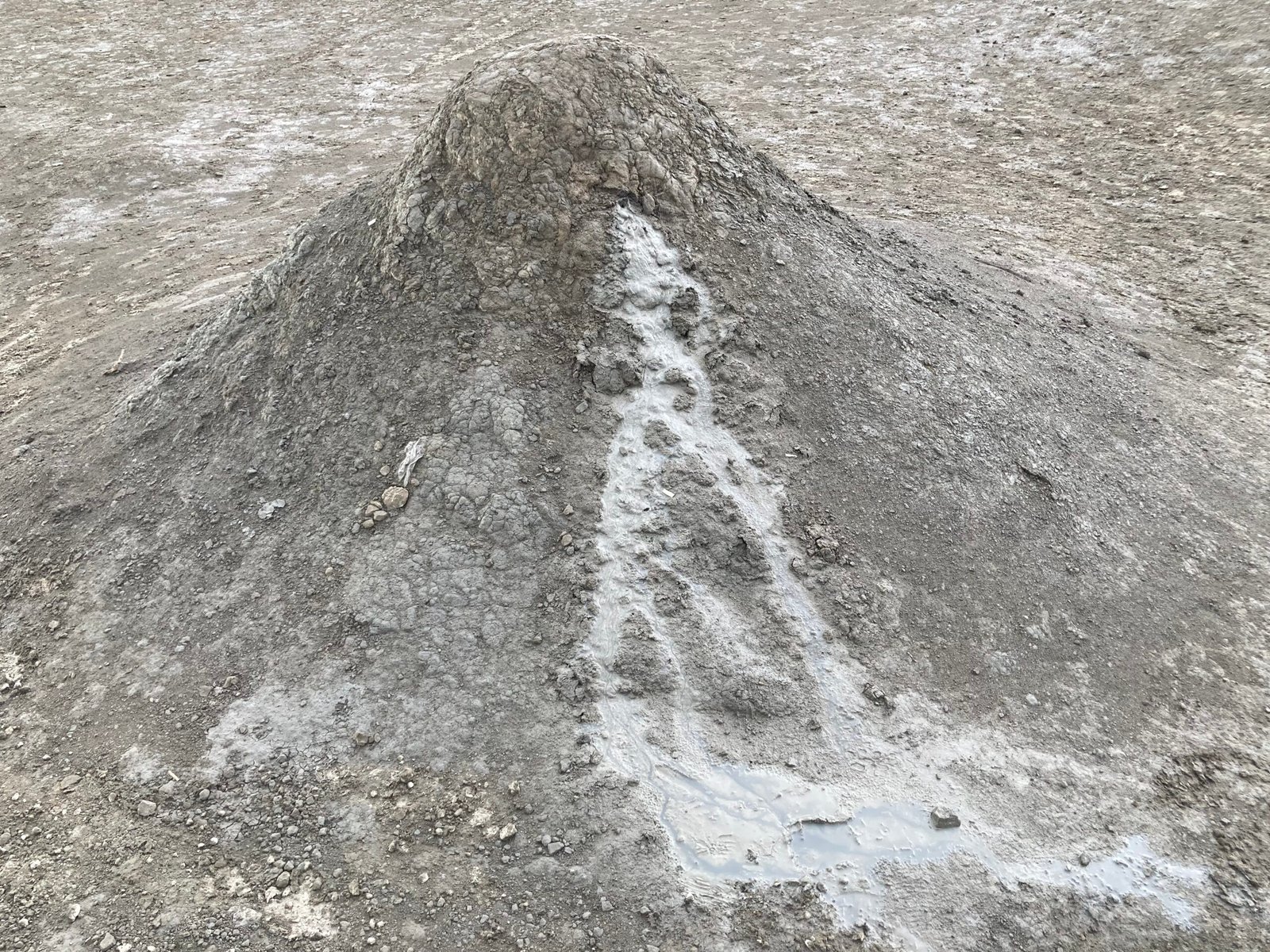
After some more time passes, this is how most of these mud volcanoes look like. The outflow stops at some point. The wind, and there is a lot of that here, slowly withers away the remaining mound. Then a new mound arises in a nearby spot.
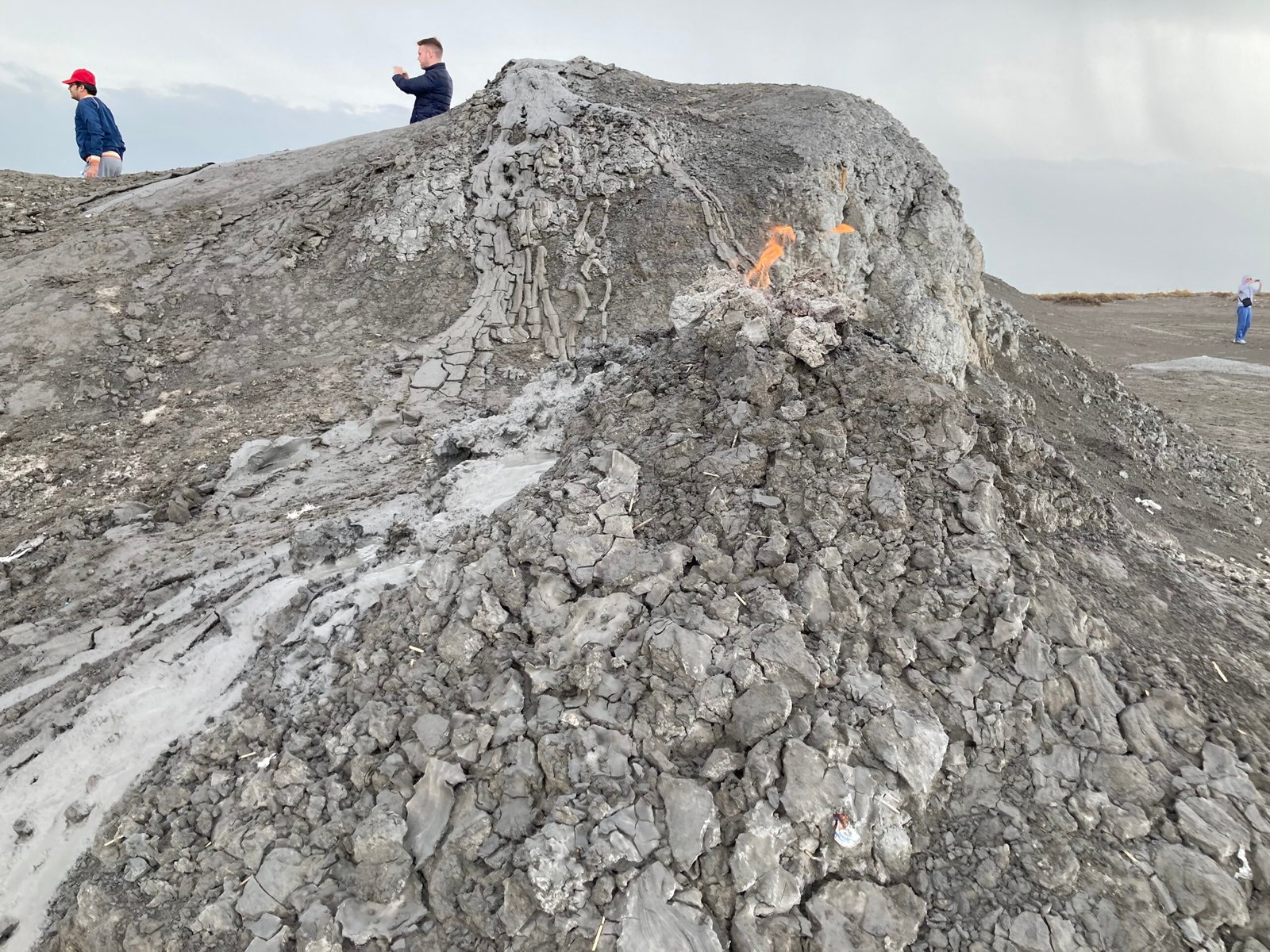
If you are lucky, you may even see a few of these mud volcanoes on fire. Presumably, some of the gas (if not most) that escapes through these mounds are flammable, and likely some visitors do not refrain from putting them to good use every now and then.
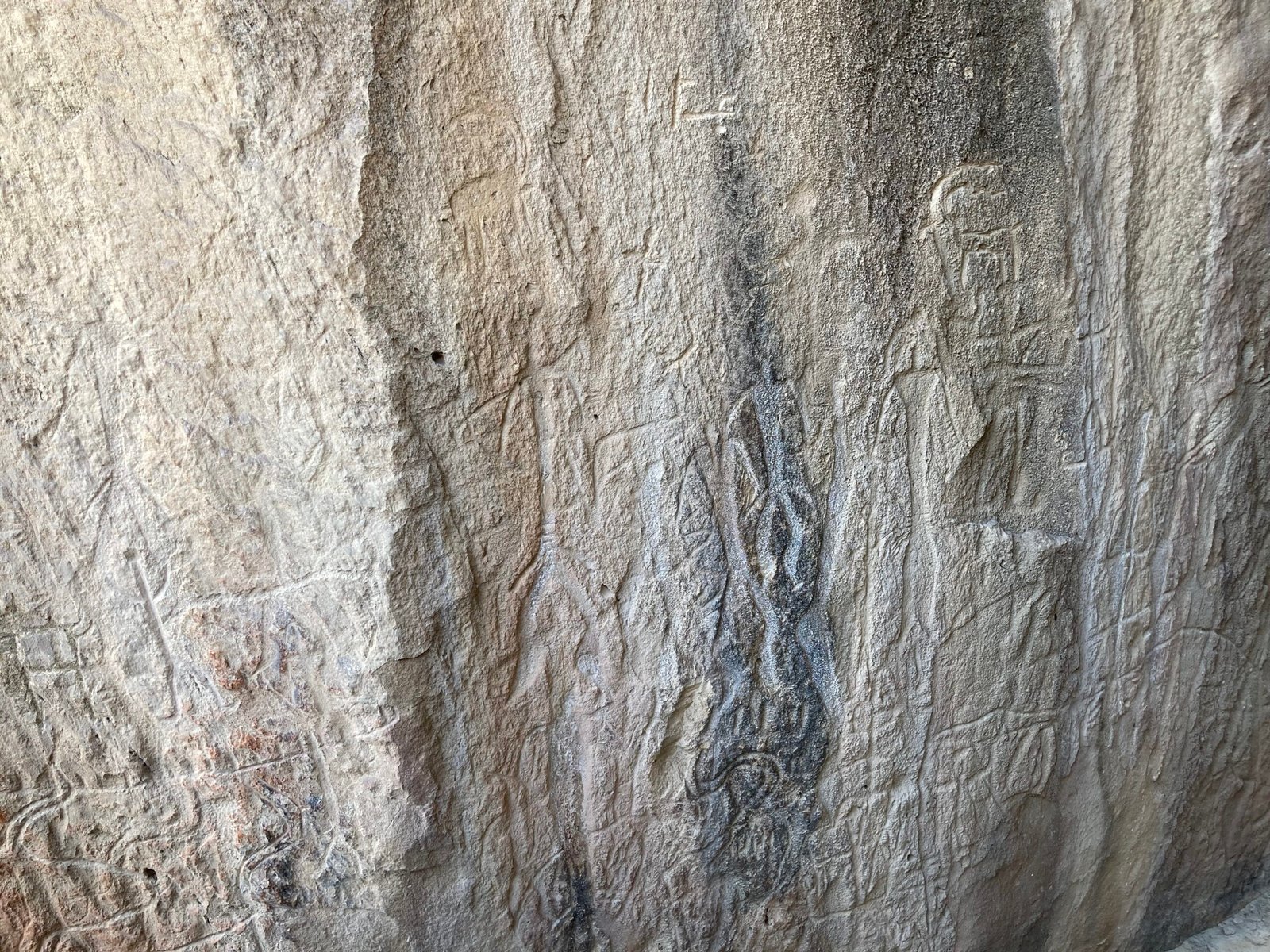
While I was certainly impressed by the mud volcanoes of Gobustan, I was not ready for the petroglyphs that are just a few kilometres away from all that mud and fire. The Gobustan National Park Museum is here for all that are interested in rock art, and by rock art I mean the true stone age stuff. While it is questionable how old some of the rock paintings in these caves are, some are thought to be as old as 13000 years old. That is, by all standards, pretty damn old.
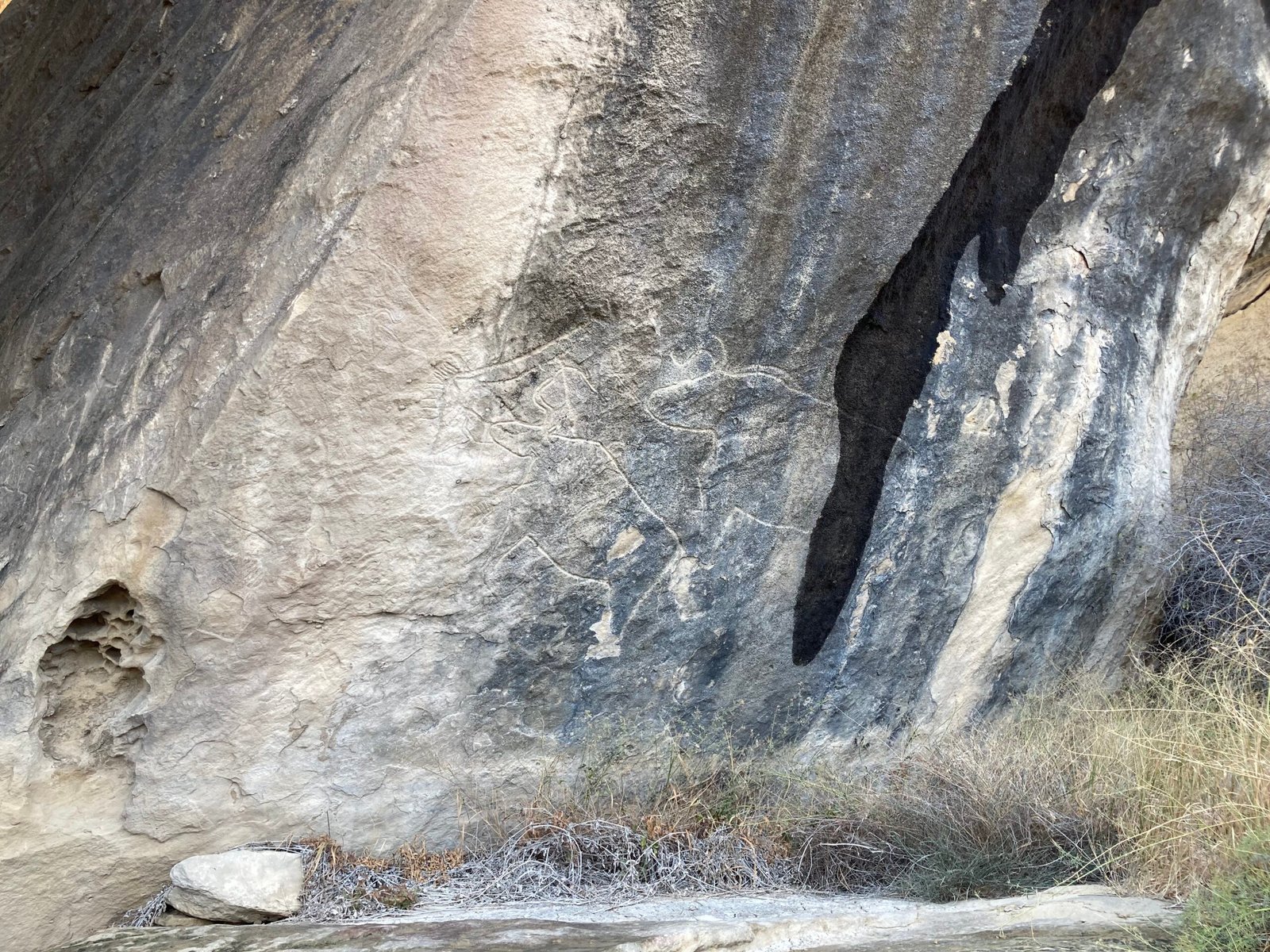
This area is under the protection of UNESCO, and only a small part of the whole gallery is open for visitors. Scientists are hard at work figuring out when these artworks were created, and what did they mean.
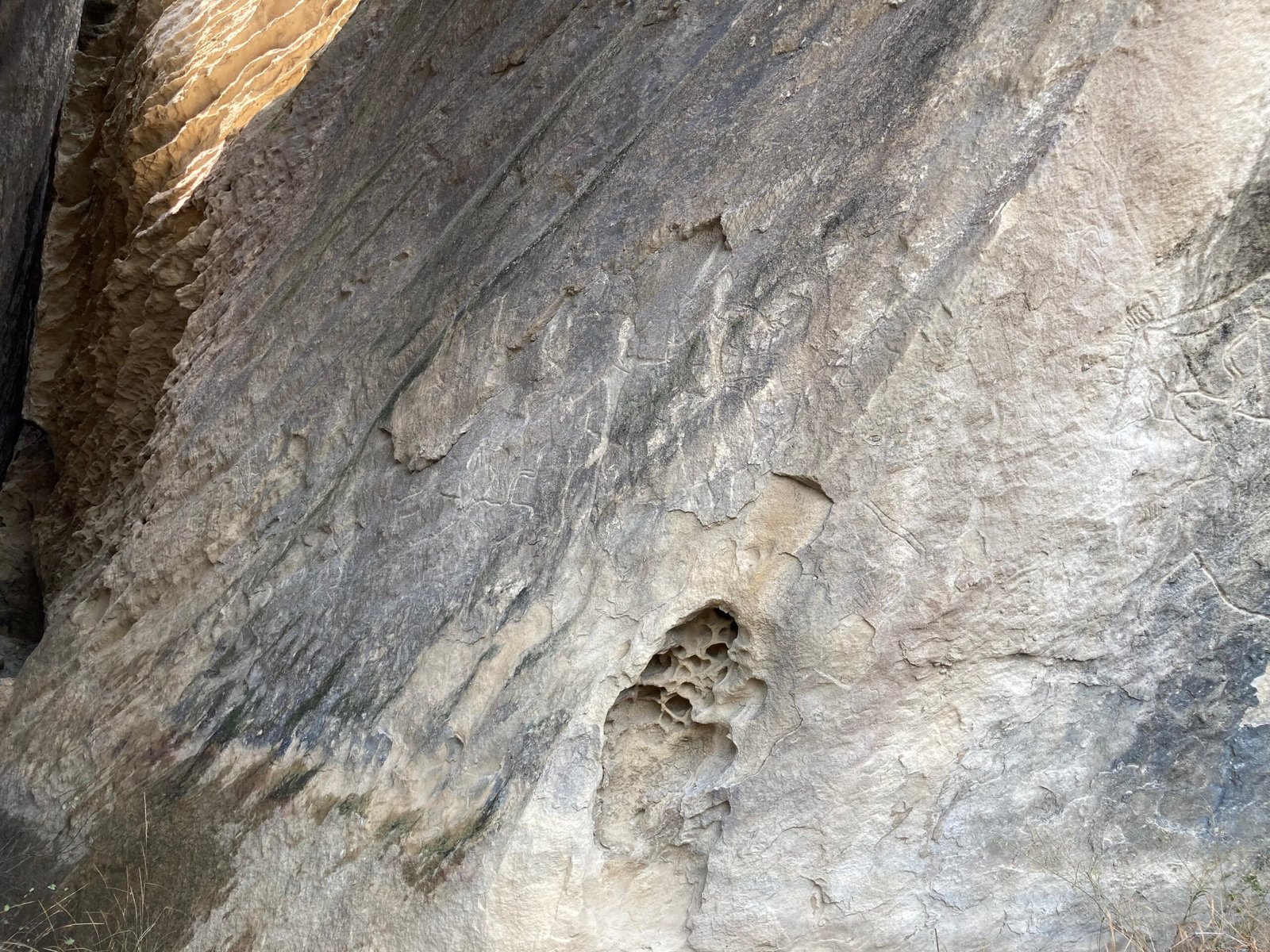
While I adored the rock paintings themselves, I cannot say the same for the way this park was designed. It was a bit too hectic even with just a hundred or so people around, but then again, maybe I was just there at the wrong time. It does not help that I was in a tour group myself.
Nevertheless, as some of my astute readers may have realized, this was the first time I paid for a tour company to complete a part of my journey, and that is for a very good reason. For 30 to 50 AZN, you get to do all of this in an orderly fashion, whereas getting to the mud volcanoes alone may cost you more if you fail to negotiate a good price with the taxi drivers. This is simply the easier and likely the cheaper way of doing this trip, and as such, I could not say no to the occasion.
What happens after the petroglyphs is that the minibus heads to a restaurant in city center for lunch, and then the remaining group goes on to visit the “burning mountain,” and then the Ateshgah of Baku. After which, they are brought back to the center of Baku. It certainly was not a bad experience, and if the weather was better, it could have been an excellent experience as well. No matter how you decide to proceed, make sure you spend the time to see the mud volcanoes of Baku, to appreciate this land of fire, and mud in all its glory!
